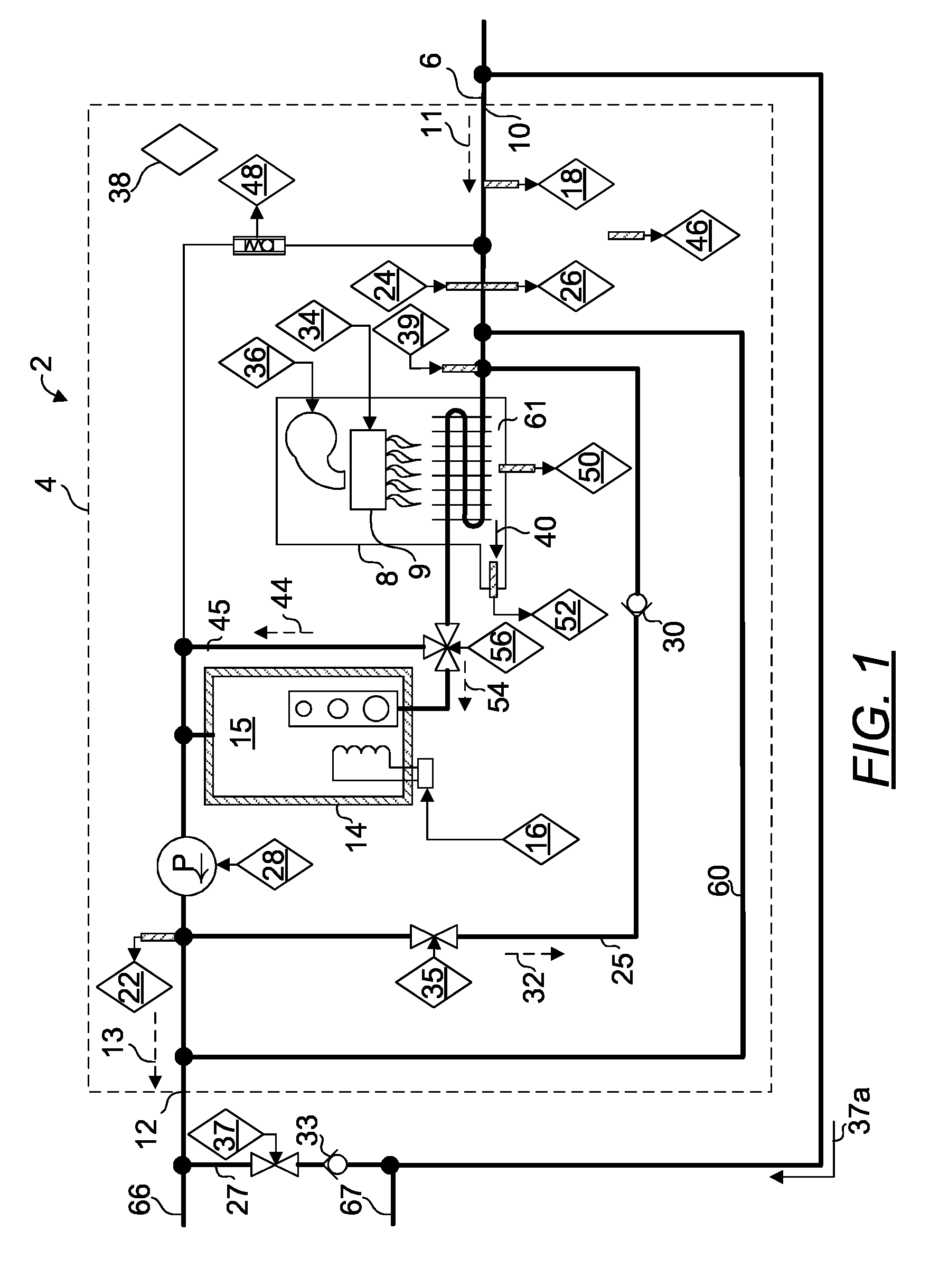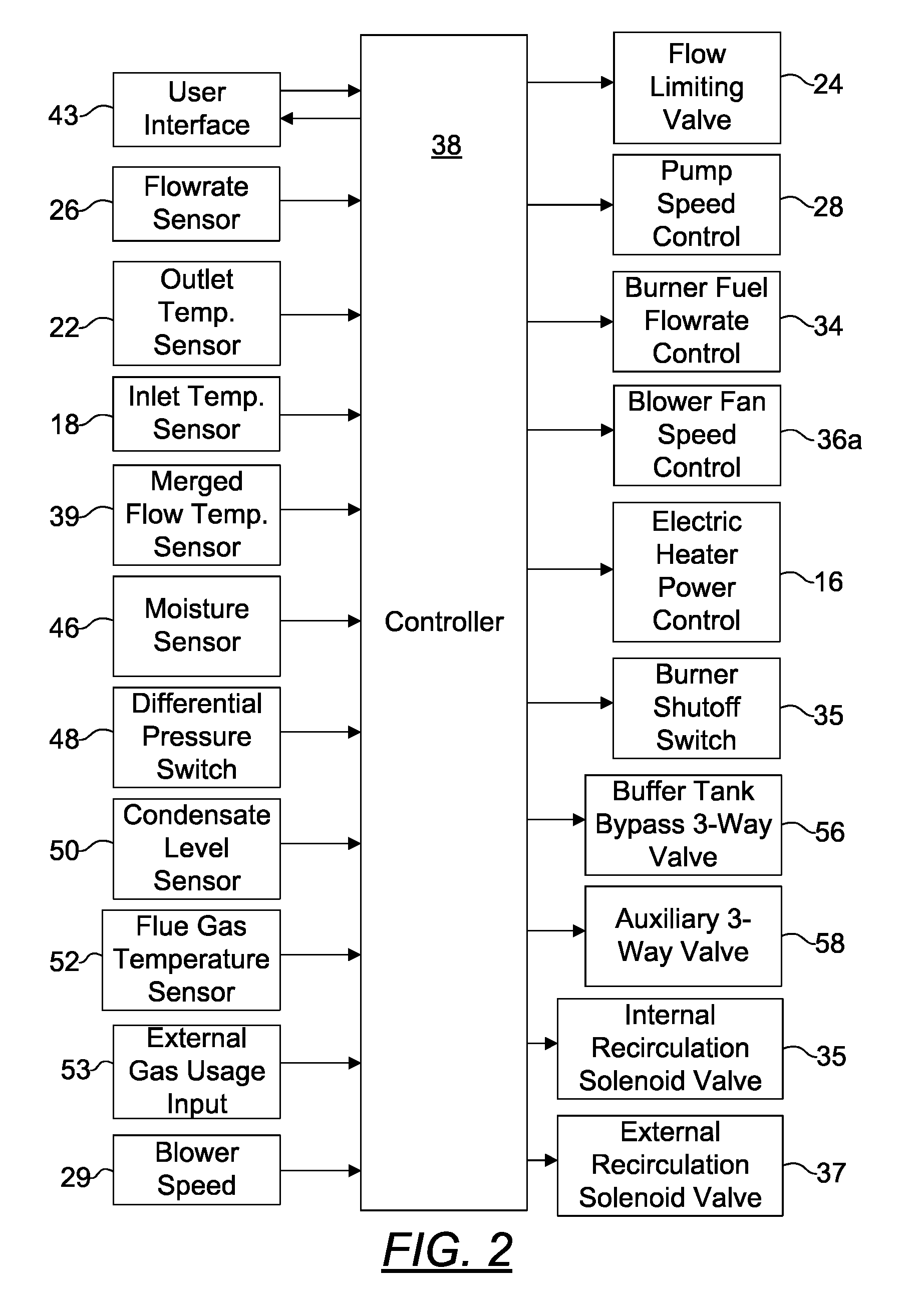Apparatus and control method for a hybrid tankless water heater
a technology of hybrid tankless water heater and control method, which is applied in the direction of ratio control, special dispensing means, temperatue control, etc., can solve the problems of user or device experiencing a sudden drop in water temperature, rapid increase in water demand, and shortening of water heating system presently available or prior art water heating system, so as to minimize the delay in temperature response and temperature fluctuations at the water heater's output , the effect of reducing the delay
- Summary
- Abstract
- Description
- Claims
- Application Information
AI Technical Summary
Benefits of technology
Problems solved by technology
Method used
Image
Examples
example 1
[0211]While water heater is in a steady state condition with conditions X1<X<X2 and Y1<Y<Y2 being satisfied, and if the absolute difference between ratio (X−X1) / (X2−X1) and ratio (Y−Y1) / (Y2−Y1) is greater than K, then the proposed new operating point or pair X, Y will be discarded. If the difference is less than K, then the proposed new operating point or pair X, Y will be incorporated into the factory default table. X1, Y1 and X2, Y2 will be retained.
example 2
[0212]While water heater is in a steady state condition, with conditions X2<X<X3 and Y1≦Y≦Y2 being satisfied, and if the absolute difference between ratio (X−X1) / (X3−X1) and ratio (Y−Y1) / (Y3−Y1) is greater than K, and then the proposed new operating point or pair X, Y will be discarded. However, if the difference is less than K, then the proposed new operating point or pair X, Y will be incorporated into the lookup table. However, in this example, the existing X2, Y2 operating point will be replaced with the new operating point or pair X, Y.
[0213]It is to be understood that a plurality of methods may be employed in determining whether an X, Y pair should be adopted.
PUM
 Login to View More
Login to View More Abstract
Description
Claims
Application Information
 Login to View More
Login to View More - R&D
- Intellectual Property
- Life Sciences
- Materials
- Tech Scout
- Unparalleled Data Quality
- Higher Quality Content
- 60% Fewer Hallucinations
Browse by: Latest US Patents, China's latest patents, Technical Efficacy Thesaurus, Application Domain, Technology Topic, Popular Technical Reports.
© 2025 PatSnap. All rights reserved.Legal|Privacy policy|Modern Slavery Act Transparency Statement|Sitemap|About US| Contact US: help@patsnap.com



